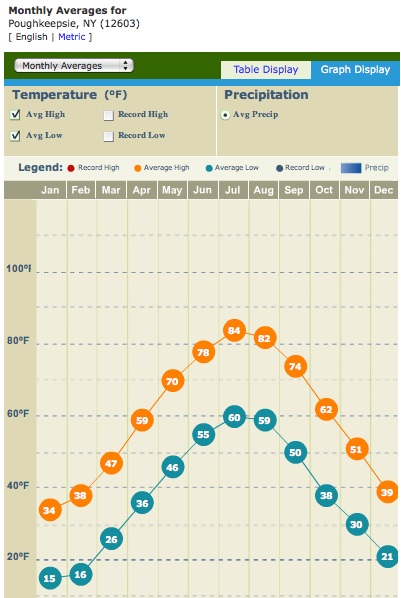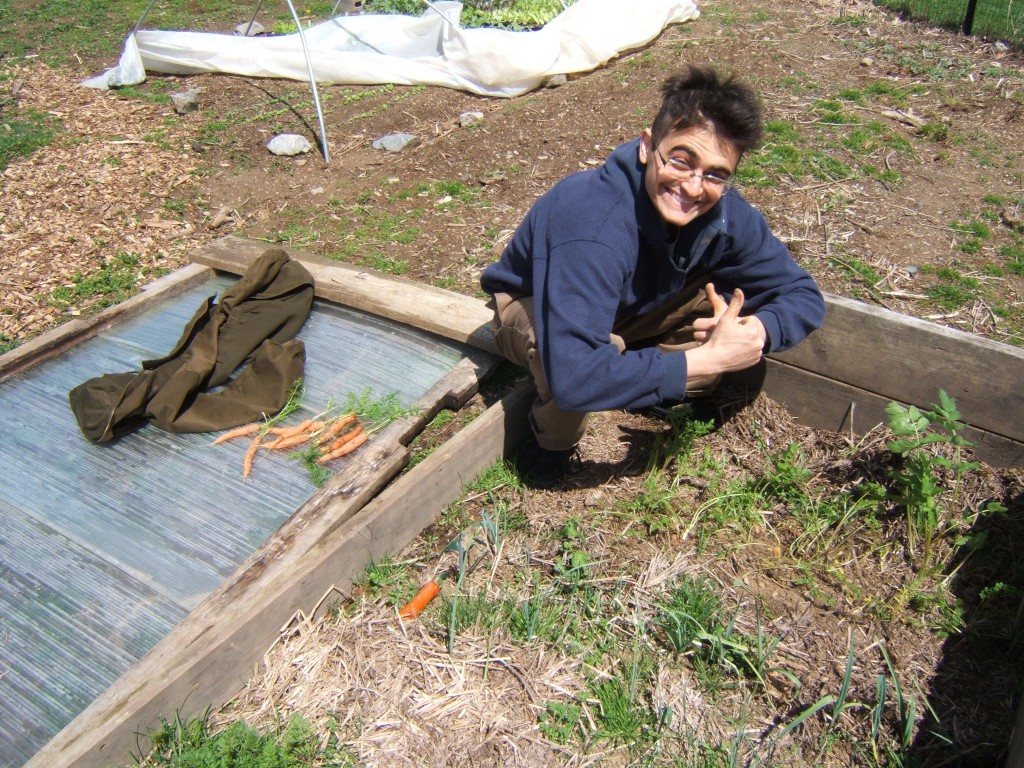Frosty Date
June 1, 2011
Frost dates are the estimated day that the first frost of the fall and the last frost of the spring can be expected. These are important dates to keep track of as frost can make or break a lot of crops. The frost date helps determine when cover should go on certain crops, when others should be harvested, and when to remove cover. That said, it’s important to pay attention to the weather day to day, as an exceptionally hot fall or early spring day can cause plants to bolt (go to seed) if left under their covers.
The estimated first (fall) frost date for Poughkeepsie is early to mid-october, sometime between the 7th and 15th. The last (spring) frost date is in late April.
The frost dates are particularly pertinent to the following plants that can be successfully maintained with season extenders but are sensitive to too much heat:
- Arugula
- Mustard greens
- Spinach
- Mâche
- Claytonia
The following vegetable can be successfully maintained during the winter with season extenders but are particularly sensitive to frost and cold weather:
- Lettuce
- Nappa cabbage
- Chard
- Escarole/frisée
- Fennel
We also find this chart of monthly average temperatures useful:
Cold Frame (of Mind)
June 1, 2011
Cold frames are an excellent season extension technique that can compliment using low hoop tunnels. We have explored a number of cold frame designs over the years, including using hay bale frames, wooden frames, and glass and plastic.
Cold frames can come in all kinds of shapes and sizes and VEG is always interested in creating new and improved designs. One of the things that experience has taught us over the years is that heavy winter snow can cause glass panels to shatter. Plastic panels seem to work well because they will merely bend under the extreme weight. If glass is used in a cold frame it should be occasionally cleared off so that snow doesn’t accumulate extensively. Or you can put the glass or plastic panels at a steep enough angle so that snow will merely slide off, preventing it from accumulating to begin with. Hinges can be attached to one side of the frame for easy lifting and removing of the panels.
The wooden cold frames VEG used have been the most convenient and sturdy. We salvaged and recycled wood from various sources.
Cold frames have numerous uses: overwintering crops, hardening off transplants in the spring, and extending the season in both the early spring and fall.



